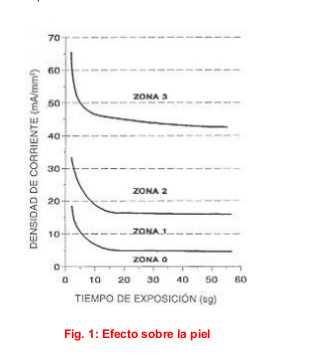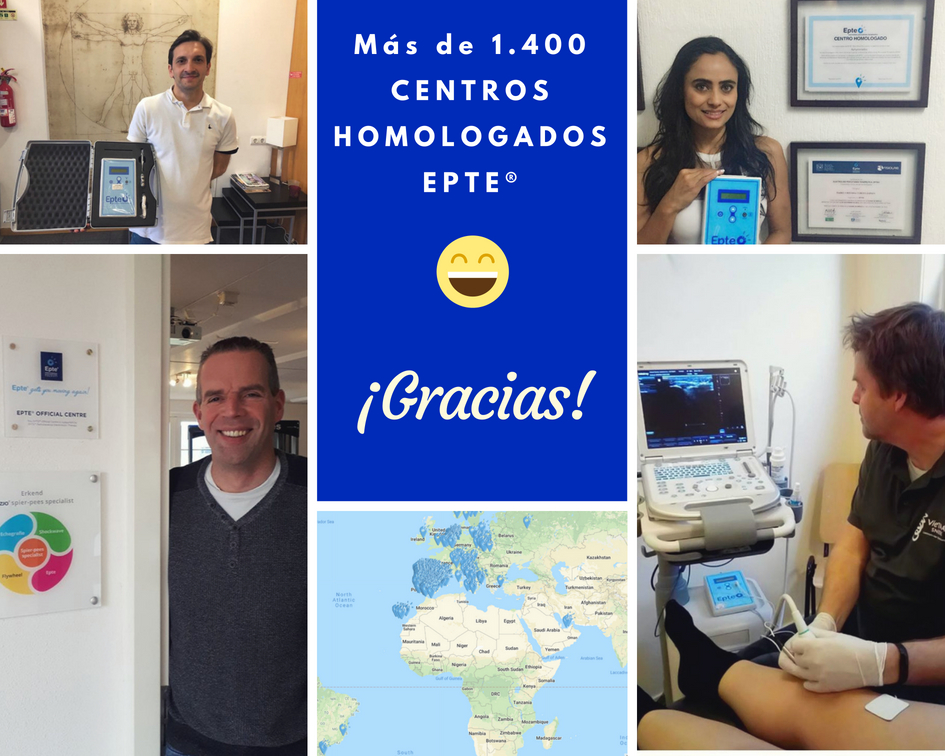Percutaneous electrolysis Therapy treatment has shown to be effective in damaged tendons thanks to the effect of galvanic current. In the case of EPTE®, percutaneous electrolysis therapy, an intensity of treatment measured in micro-ampers (a milion part of an Amper) is applied. To choose low intensity (micro-Amps instead of mili-Amps) is a safety issue.
The amount of decomposed substance in its basic substances (electrolysis) is directly related to electric charge, and therefore it depends on intensity and time, according to the First Law of Faraday about electrolysis, based on his electrochemical researches, published in 1834 and accepted by all the scientific community. In the next post, it will be described the relationship between intensity and time and safety aspects in electrolysis application.
Relationship between intensity / time and safety aspects
Intensity and time in the treatment will determinate the ELECTRIC CHARGE applied in the tissue. This electric charge is measured in coulombs.
Q = I x t (intensity (A) multiplied by time (sec)).
Electrolysis occurs when a continuos current (galvanic) is applied using a pair of electrodes, connected to an electric energy source through a solution (also named electrolyte). In the case of electrolysis applied with therapeutic purposes, the patient and his different tissues are the electrolyte.
Using electrical current with therapeutic purposes always means a risk for the patient, as electricity could cause different damages. The damage will depend on different factors such as the patient’s phsyiological characteristics, the ambient factors (wet, dry,…) and the electric current features (continuos, alternate, frequency) and most of all, the intensity of the current through the body and the time.
To reach the desired electrical therapeutic load, there are two options in the market:
- Generate a low electric current for a long time
- Generate a high intensity electric current for a short time.
In both cases the electric charge will be the same, as it could be seen in the next infography. Charge is a main factor to calculate the electrolysis amount, according to First Law of Faraday.

The same amount of electrolysis will be generated with a current of 2mA (2000µA) during 10 seconds than with a current of 0.2 mA (200µA) during 100 seconds.
Althought obtaining the same electric charge in both presets, working with high intensity currents has different negative factors compared to working with low intensity currents:
- More pain feeling during the therapy, due to the higher intensity currrent. The current density is the quotation between current and electrode surface. In case of negative electrode (cathode), surface is very narrow, and the current density increases.
- Higher risk to suffer adverse side effects.
Intensity and safety: law about current effects in human body
In the technical report CEI 479-1: 1994 (adapted to the spanish standard UNE 20572-1), there are exposed the effects of the current in human body and domestic animals. It is described that galvanic current could cause alterations in the skin depending on the density of the current flowing in a determinated area (mA/mm2) and time of exposition.

There are three zones:
- Zone 0: no changes described.
- Zone 1:the skin maybe redden and some inflamation is described next to the electrode extreme.
- Zone 2: contiguos electrode area become brown, and after some seconds, some inflamation is described.
- Zone 3: the current could cause carbonization.
ACCORDING TO THIS IMAGE, IT COULD BE CONCLUDED THAT DENSITY CURRENT IS THE MOST IMPORTANT FACTOR in case of AN UNDESIRABLE SITUATION (DANGER WHEN APPLYING THE TECHNIQUE). TIME HAS LOWER RELEVANCE.
Intensity and safety: an example.
As an example, we will take two values of current density and time of expositon with the same electric charge, to compare them. The danger with higher density current is more relevant than with lower density current:
Example 1: 20 mA/mm2 10 seconds Q(1mm2)= 200 mC
Example 2: 05 mA/mm2 40 seconds Q(1mm2)= 200 mC
Finally, if working with high or low electric current, the level of therapeutic current must be gradually reached, according to the standard IEC 60601-2-10 for electro-medicine devices.
EPTE® device, aproved with the CE sanitary label has a double ramp system to reach the maximum current of treatment. Its gradual application has also an effect in pain threshold of the patient, thanks to a progressive adaptation of the patient to the current flow (being progresive, the adaptation will be done gradually) and it also will give the therapist some information about the point of patient discomfort. In case of patient hipersensitivity, if the point of patient disconfort was under the treatment intensity, the therapist would be able to adapt both paramethers, intensity – time, to get the same electric charge (same Q number) when percutaneous electrolysis is applied.
Intensity and safety. Some references:
- Standard IEC 60601-2-10 electromedical devices. Safety requirements for nervous and muscular stimulator machines.
- ISO 14971:2009. Medical Devices – Application of risk management to medical devices

